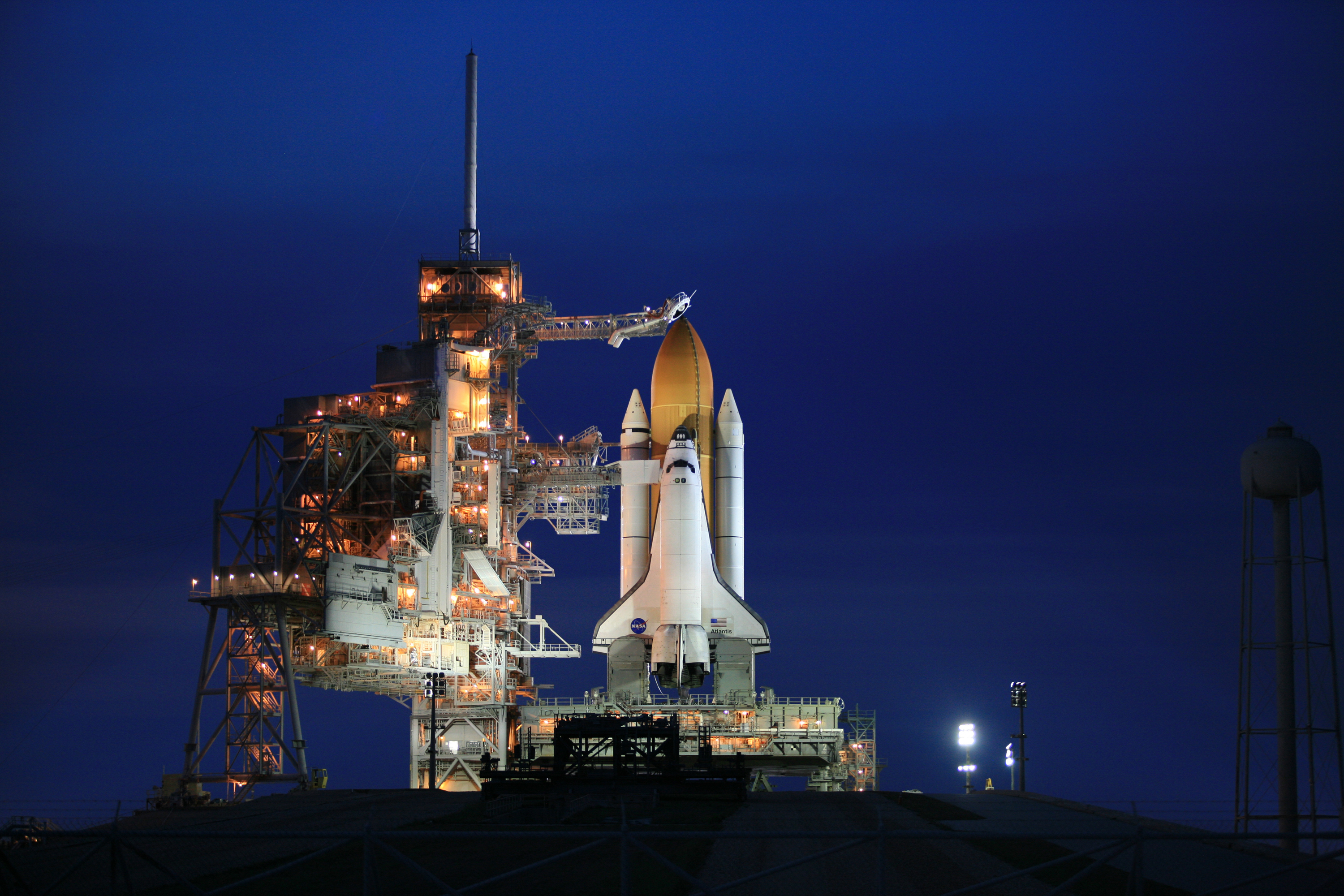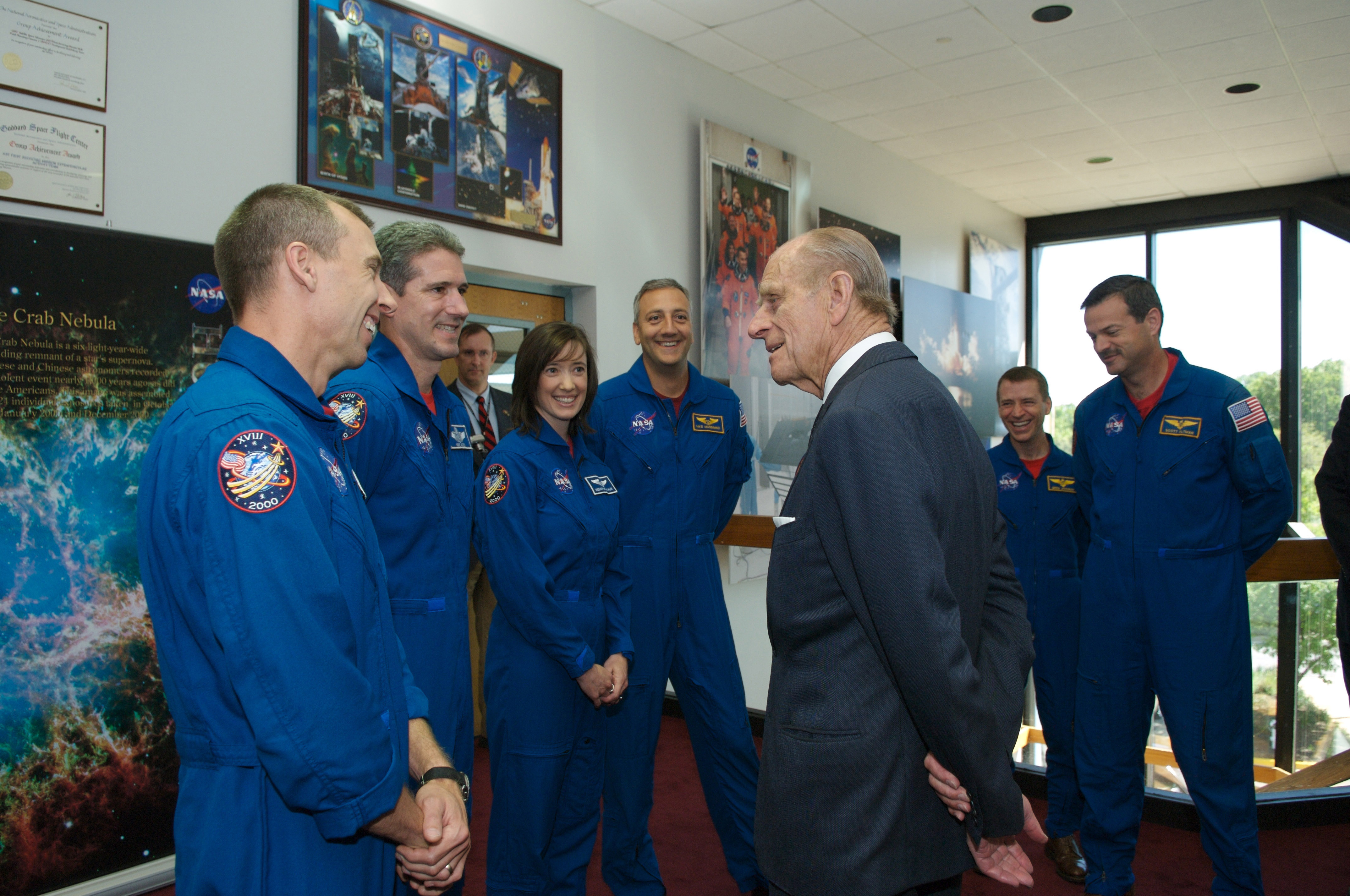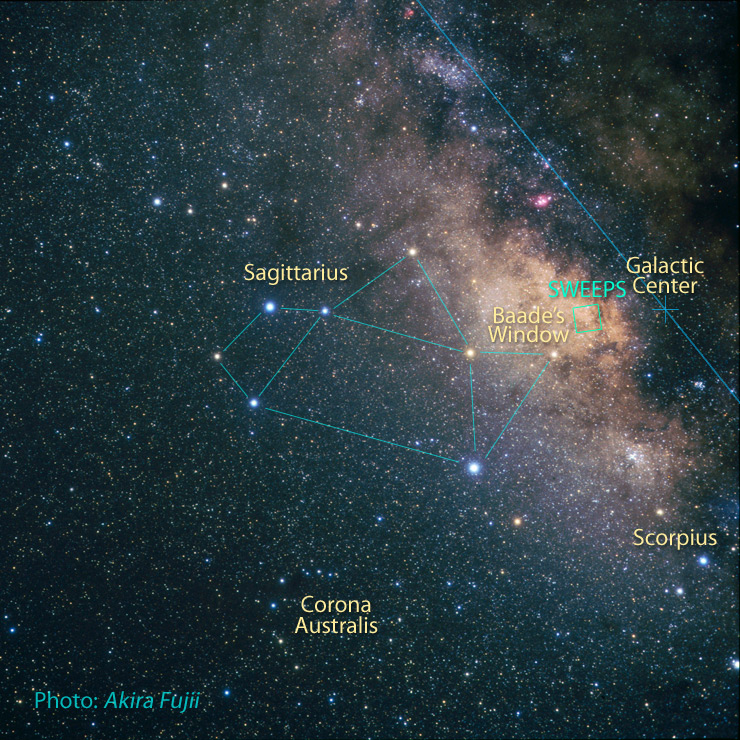|
Advanced Camera For Surveys
The Advanced Camera for Surveys (ACS) is a third-generation axial instrument aboard the Hubble Space Telescope (HST). The initial design and scientific capabilities of ACS were defined by a team based at Johns Hopkins University. ACS was assembled and tested extensively at Ball Aerospace & Technologies Corp. and the Goddard Space Flight Center and underwent a final flight-ready verification at the Kennedy Space Center before integration in the cargo bay of the Columbia orbiter. It was launched on March 1, 2002, as part of Servicing Mission 3B (STS-109) and installed in HST on March 7, replacing the Faint Object Camera (FOC), the last original instrument. ACS cost US$86 million at that time. ACS is a highly versatile instrument that became the primary imaging instrument aboard HST. It offered several important advantages over other HST instruments: three independent, high-resolution channels covering the ultraviolet to the near-infrared regions of the spectrum, a large detector ar ... [...More Info...] [...Related Items...] OR: [Wikipedia] [Google] [Baidu] |
Grism
A grism (also called a grating prism) is a combination of a prism and grating arranged so that light at a chosen central wavelength passes straight through. The advantage of this arrangement is that one and the same camera can be used both for imaging (without the grism) and spectroscopy (with the grism) without having to be moved. Grisms are inserted into a camera beam that is already collimated. They then create a dispersed spectrum centered on the object's location in the camera's field of view. The resolution of a grism is proportional to the tangent of the wedge angle of the prism in much the same way as the resolutions of gratings are proportional to the angle between the input and the normal to the grating. The dispersed wavefront sensing system (as part the NIRCam instrument) on the James Webb Space Telescope uses grisms. The system allows coarse optical path length matching between the different mirror segments. See also * Diffraction grating * Echelle grating * Slitless ... [...More Info...] [...Related Items...] OR: [Wikipedia] [Google] [Baidu] |
STS-125
STS-125, or HST-SM4 (Hubble Space Telescope Servicing Mission 4), was the fifth and final Space Shuttle mission to the Hubble Space Telescope (HST) and the last solo flight of the Space Shuttle Atlantis, Space Shuttle ''Atlantis''. The launch of the Space Shuttle ''Atlantis'' occurred on 11 May 2009 at 2:01 pm EDT. Landing occurred on 24 May at 11:39 am EDT, with the mission lasting a total of just under 13 days. carried two new instruments to the Hubble Space Telescope, the Cosmic Origins Spectrograph and the Wide Field Camera 3. The mission also replaced a Fine Guidance Sensor (HST), Fine Guidance Sensor, six gyroscopes, and two battery (electricity), battery unit modules to allow the telescope to continue to function at least through 2014. The crew also installed new thermal blanket insulating panels to provide improved thermal protection, and a soft-capture mechanism that would aid in the safe de-orbiting of the telescope by a robotic spacecraft at the end of its op ... [...More Info...] [...Related Items...] OR: [Wikipedia] [Google] [Baidu] |
NASA
The National Aeronautics and Space Administration (NASA ) is an independent agency of the US federal government responsible for the civil space program, aeronautics research, and space research. NASA was established in 1958, succeeding the National Advisory Committee for Aeronautics (NACA), to give the U.S. space development effort a distinctly civilian orientation, emphasizing peaceful applications in space science. NASA has since led most American space exploration, including Project Mercury, Project Gemini, the 1968-1972 Apollo Moon landing missions, the Skylab space station, and the Space Shuttle. NASA supports the International Space Station and oversees the development of the Orion spacecraft and the Space Launch System for the crewed lunar Artemis program, Commercial Crew spacecraft, and the planned Lunar Gateway space station. The agency is also responsible for the Launch Services Program, which provides oversight of launch operations and countdown management f ... [...More Info...] [...Related Items...] OR: [Wikipedia] [Google] [Baidu] |
Space Telescope Imaging Spectrograph
The Space Telescope Imaging Spectrograph (STIS) is a spectrograph, also with a camera mode, installed on the Hubble Space Telescope. Aerospace engineer Bruce Woodgate of the Goddard Space Flight Center was the principal investigator and creator of the STIS. It operated continuously from 1997 until a power supply failure in August 2004. After repairs, it began operating again in 2009. The spectrograph has made many important observations, including the first spectrum of the atmosphere of an extrasolar planet, HD 209458b. The STIS was installed on Hubble in 1997 during its second servicing mission (STS-82) by Mark Lee and Steven Smith, replacing the High Resolution Spectrograph and the Faint Object Spectrograph. It was designed to operate for five years. On August 3, 2004, an electronic failure rendered STIS inoperable, ending its use 2 years beyond its predicted lifespan. In order to bring it back to operational status, the instrument was repaired by space shuttle astrona ... [...More Info...] [...Related Items...] OR: [Wikipedia] [Google] [Baidu] |
William George Fastie
William George Fastie (6 December 1916 – 14 July 2000) was an American optical physicist and spectroscopist who played a part in the Johns Hopkins University space program of the late 1950s. Early years Fastie was one of four children of William Ferdinand and Carolyn Fastie. He attended Johns Hopkins University between 1934 and 1941, initially at evening classes and later as a graduate student in physics, supervised by August Herman Pfund, Robert W. Wood, and Gerhard Heinrich Dieke. Career During World War II, Fastie work in the department of physics involved the development of infrared detectors. At the end of the War he joined Leeds & Northrup as a research physicist, but was lured back to Hopkins in 1951 by the professor of physics, John D. Strong. Fastie's first publication described a new design of spectrometer which today bears his name. With the launch of Sputnik 1, Fastie saw the potential of spectroscopy from space, and started a program at Hopkins to develop ... [...More Info...] [...Related Items...] OR: [Wikipedia] [Google] [Baidu] |
Mars Close Encounter (captured By The Hubble Space Telescope)
Mars is the fourth planet from the Sun and the second-smallest planet in the Solar System, only being larger than Mercury. In the English language, Mars is named for the Roman god of war. Mars is a terrestrial planet with a thin atmosphere (less than 1% that of Earth's), and has a crust primarily composed of elements similar to Earth's crust, as well as a core made of iron and nickel. Mars has surface features such as impact craters, valleys, dunes and polar ice caps. It has two small and irregularly shaped moons, Phobos and Deimos. Some of the most notable surface features on Mars include Olympus Mons, the largest volcano and highest known mountain in the Solar System and Valles Marineris, one of the largest canyons in the Solar System. The Borealis basin in the Northern Hemisphere covers approximately 40% of the planet and may be a large impact feature. Days and seasons on Mars are comparable to those of Earth, as the planets have a similar rotation period and tilt o ... [...More Info...] [...Related Items...] OR: [Wikipedia] [Google] [Baidu] |
Sagittarius Window Eclipsing Extrasolar Planet Search
The Sagittarius Window Eclipsing Extrasolar Planet Search, or SWEEPS, was a 2006 astronomical survey project using the Hubble Space Telescope's Advanced Camera for Surveys - Wide Field Channel to monitor 180,000 stars for seven days to detect extrasolar planets via the transit method. Area examined The stars that were monitored in this astronomical survey were all located in the Sagittarius-I Window. The Sagittarius Window is a rare view to the Milky Way's central bulge stars: our view to most of the galaxy's central stars is generally blocked by lanes of dust. These stars in the galaxy's central bulge region are approximately 27,000 light years from Earth. Planets discovered Sixteen candidate planets were discovered with orbital periods ranging from 0.6 to 4.2 days. Planets with orbital periods less than 1.2 days have not previously been detected, and have been dubbed " ultra-short period planets" (USPPs) by the search team. USPPs were discovered only around low-mass sta ... [...More Info...] [...Related Items...] OR: [Wikipedia] [Google] [Baidu] |
Nanometer
330px, Different lengths as in respect to the molecular scale. The nanometre (international spelling as used by the International Bureau of Weights and Measures; SI symbol: nm) or nanometer (American and British English spelling differences#-re, -er, American spelling) is a units of measurement, unit of length in the International System of Units (SI), equal to one billionth (short scale) of a metre () and to 1000 picometres. One nanometre can be expressed in scientific notation as , and as metres. History The nanometre was formerly known as the millimicrometre – or, more commonly, the millimicron for short – since it is of a micron (micrometre), and was often denoted by the symbol mμ or (more rarely and confusingly, since it logically should refer to a ''millionth'' of a micron) as μμ. Etymology The name combines the SI prefix ''nano-'' (from the Ancient Greek , ', "dwarf") with the parent unit name ''metre'' (from Greek , ', "unit of measurement"). ... [...More Info...] [...Related Items...] OR: [Wikipedia] [Google] [Baidu] |
Megapixel
In digital imaging, a pixel (abbreviated px), pel, or picture element is the smallest addressable element in a raster image, or the smallest point in an all points addressable display device. In most digital display devices, pixels are the smallest element that can be manipulated through software. Each pixel is a sample of an original image; more samples typically provide more accurate representations of the original. The intensity of each pixel is variable. In color imaging systems, a color is typically represented by three or four component intensities such as red, green, and blue, or cyan, magenta, yellow, and black. In some contexts (such as descriptions of camera sensors), ''pixel'' refers to a single scalar element of a multi-component representation (called a ''photosite'' in the camera sensor context, although ''sensel'' is sometimes used), while in yet other contexts (like MRI) it may refer to a set of component intensities for a spatial position. Etymology The w ... [...More Info...] [...Related Items...] OR: [Wikipedia] [Google] [Baidu] |
Charge-coupled Device
A charge-coupled device (CCD) is an integrated circuit containing an array of linked, or coupled, capacitors. Under the control of an external circuit, each capacitor can transfer its electric charge to a neighboring capacitor. CCD sensors are a major technology used in digital imaging. In a CCD image sensor, pixels are represented by p-doped metal–oxide–semiconductor (MOS) capacitors. These MOS capacitors, the basic building blocks of a CCD, are biased above the threshold for inversion when image acquisition begins, allowing the conversion of incoming photons into electron charges at the semiconductor-oxide interface; the CCD is then used to read out these charges. Although CCDs are not the only technology to allow for light detection, CCD image sensors are widely used in professional, medical, and scientific applications where high-quality image data are required. In applications with less exacting quality demands, such as consumer and professional digital cameras, act ... [...More Info...] [...Related Items...] OR: [Wikipedia] [Google] [Baidu] |



.jpg)

